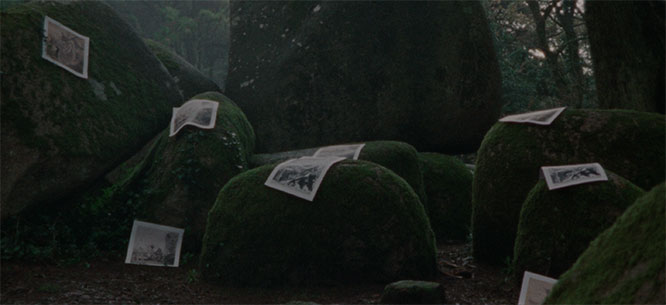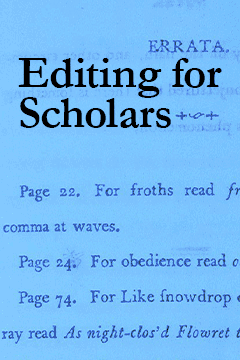Fragments of a New World
Fragments of a New World
In Suneil Sanzgiri’s new film, the landscape remains as a last witness to the violence of colonial power.

A photograph of Sita Valles dressed in a paisley blue miniskirt with a hand on her hip, leaning against a glossy red car, has made the young revolutionary an icon. It appears on book covers, posters, and a mural in Panjim, the capital of Goa, India. In Two Refusals (Would We Recognize Ourselves Unbroken?), a film by the Goan-American artist Suneil Sanzgiri recently on view at the Brooklyn Museum, Sita’s brother Edgar Valles, a lawyer living in Portugal, tells her story.
The siblings, born and raised in Angola, were members of the Communist Party in Portugal during the late years of the Estado Novo, the dictator António Salazar’s military government, and they worked to bring about the Carnation Revolution, which turned Portugal into a democracy and led to the liberation of its remaining colonies. Sita, who was “emotionally involved in solidarity with other people,” as her brother recounts, was invited to help build the organizational structure for a left-wing movement in newly independent Angola. In the violence following protests against corruption within the country’s first postcolonial government—remembered by some as “Angola’s secret massacre”—Valles was murdered. While her image has become legendary, her ambitious vision of solidarity has mostly been forgotten.
Two Refusals is a geographically sprawling film that mourns lost pasts and unrealized futures. Across two screens, Sanzgiri weaves together archival footage, interviews, and animation, with a script by the Hyderabadi-American poet Sham-e-Ali Nayeem composed largely in the style of epistolary address. The narration begins with the story of Adamastor, a mythological figure who embodies the Cape of Good Hope and the storminess of the seas, first imagined by the Portuguese poet Luís de Camōes in his 1572 Os Lusíadas. The epic chronicles Vasco da Gama’s fifteenth-century journey to India, which was hampered by threats of hostility from people guarding the Mozambique Channel and the treachery of the sea. Adamastor ultimately let the Portuguese pass, leading to centuries of violent colonial rule.
“What if they never reached us? What could have been?” The question keeps the narrator awake at night, haunts the fishers who traverse Goan rivers in the indigo twilight, lingers in the bristling emerald trees, washes up on weathered shores. Sanzgiri combines footage of the Goan and Portuguese countryside with CGI, literally animating the natural world with once-lost possibility. Over footage of the sea, Sanzgiri conjures a billowing storm, unfurling like a smokestack above lightning-struck cliffs; it all but eclipses the light of the sky. The landscape remains as a last witness to the violence of colonial power.
At just over thirty-four minutes, Two Refusals is Sanzgiri’s fourth and longest film. It follows a trilogy that began in 2019 with At Home But Not At Home, a film that featured screengrabs of Skype interviews with the artist’s father, Shashi, who grew up in Goa. Sanzgiri’s films posed questions about our shared past. “What is this world I came into, and what ruins were left in its wake?” he asks in Letter From Your Far-Off Country (2020). The question in Golden Jubilee (2021) is more specific: how can pre-colonial heritage be honored without falling into nationalism? In his art and as an activist, Sanzgiri has also spoken out against the rising tide of far-right movements and ethnonationalist parties, including India’s BJP and Benjamin Netanyahu’s government in Israel.
Sanzgiri shot all of the footage for Two Refusals in Portugal and India, the latter of which he visited for the first time only a few years ago. Raised in Texas, he is firmly a child of diaspora—a status whose contradictions he interrogates in his work. He visually portrays this position in forms of movement: a camera shakily pans over rocky, sunlit waters on one screen while on the other screen an imperial painting of a maritime battle shows ships engulfed in flames. Two Refusals is a sensorially immersive film. People walk through cosmopolitan urban streets, and a woman traverses a rice paddy, barefoot, at dawn. Crowds pass by on trains. Workers unload large sacks and crates from freight ships. At times, the camera moves so quickly through the landscape that no particular forms are discernible at all, leaving the viewer to perceive nature as little more than a light-filled blur. The audio flits between channels like a radio dial being tuned, forcing the viewer to perpetually reorient. A discordant jazz score gives way to the sound of moving water, whirring car engines to a woman singing with a jagged voice.
The narrative of Two Refusals is at times difficult to follow. The cumulative effect of the visual and sonic manipulations (the CGI, the unsettled score) is disorienting, but it also makes the viewer aware of the tensions in the subject matter itself—a tension present in any story of diaspora that involves competing histories and memories. In a projected image that is part of the exhibit in which Two Refusals was shown, Sanzgiri displays a red banner planted in an open sea, rippling in the wind, and invokes a line by the Kashmiri-American poet Agha Shahid Ali: “Your history gets in the way of my memory.”
In the years surrounding Goa’s liberation from Portuguese rule in 1961, many people moved between the region and Portugal’s remaining colonies of Mozambique, Angola, and Guinea-Bissau, all of which were independent by 1975. Some settled through colonial labor networks; others traveled as artists and activists. These migrants shaped a new world that brimmed with postcolonial possibility, a world so close it was almost within reach.
Activists worked across borders in an attempt to build power for the newly independent nations. India (which subsumed Goa in 1961), Mozambique, Angola, and Guinea-Bissau each became members of the Non-Aligned Movement, an international consortium of nations that refused to be aligned with the United States or the Soviet Union. This history is often only remembered as a failure, as capitalist globalization and its organizational pillars have rendered comatose the idea that another world is possible. In Sanzgiri’s film, dimly lit shots of rural wilderness are followed by the dizzying glow of city nights awash with screens; even the quiet Mandovi River now glares with the reflection of casino signs.
Yet historical change often begins with a refusal, no matter how small. Sharada Sawaikar, a Goan liberation fighter who was jailed at the age of seventeen, reminds us in the film that decolonization was shaped not by utopianism but strategic pragmatism. India’s annexation of Goa, for instance, was not a total victory, or everyone’s ideal outcome—just the one most possible. As Sawaikar recounts: “The thoughts that came to me, I turned them into poetry. I used that to call out to India, as there was no one coming in to help us. We were stuck in the clutches of the Portuguese and only India could come and rescue us.”
Sawaikar’s recollections are at the core of Sanzgiri’s project: a process of retrieval that reminds us not only of what was once believed possible, but also what was always out of reach but was dreamed of anyway. The liberation fighters who moved between former Portuguese colonies and Europe were not always ideologically pure, but reanimating their memory is important if we are to understand the world we have inherited.
Perhaps where Sanzgiri shines the most is in his collaging, splicing original and archival clips with important moments from Third Cinema—the loosely defined moment in which filmmakers from Latin America, Asia, and Africa created work opposing neocolonialism and the commercialization of the movie industry. Sanzgiri’s inclusion of clips from Sarah Maldoror’s Angolan film Sambizanga (1972) and Ruy Guerra’s Mueda, Memória e Massacre (1979), which reconstructs a Portuguese massacre in Mozambique, underscores how radical ideas have long traveled over national boundaries. Our world, after all, like Sanzgiri’s work, is constructed in fragments, each and every part integral to the whole. It’s not a world determined by failures past, but one still under construction, still being forged by our own refusals.
Nicole-Ann Lobo is a writer and joint doctoral candidate of the Department of Art & Archaeology and the Council of Humanities at Princeton University.





